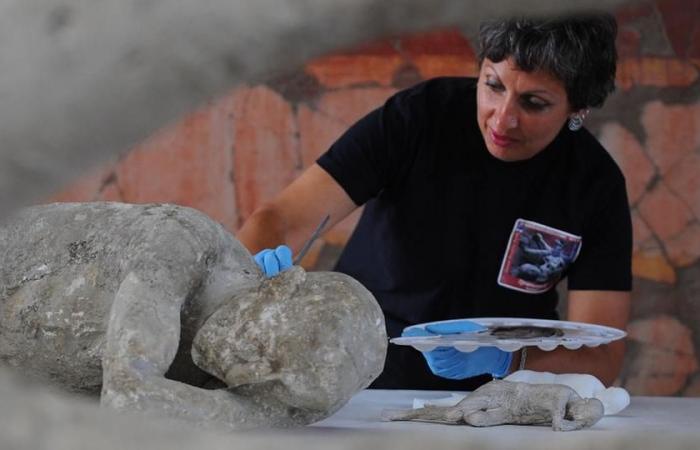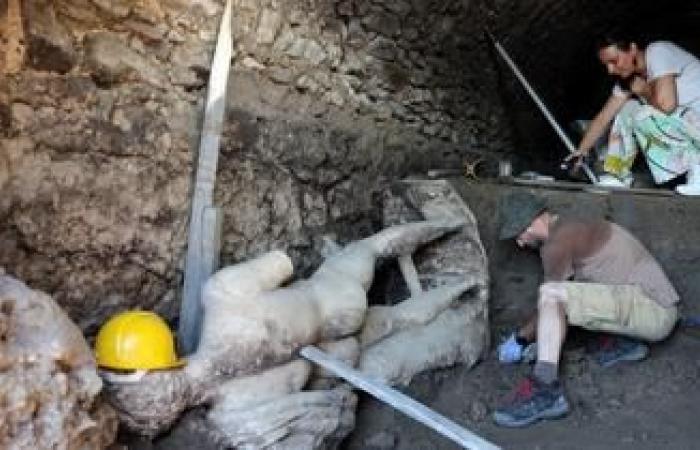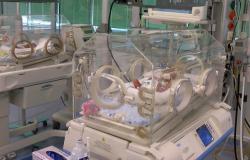Researchers have studied the DNA of several victims of the eruption of Mount Vesuvius in the year 79. The findings call into question many of the deeply rooted interpretations about the ancient city of Pompeii but also about the society that lived there .
When Vesuvius erupted in August 79 AD, it destroyed several ancient cities but also froze them in time. Since its discovery in the 16th century and the start of excavations in 1738, Pompeii has continued to fascinate archaeologists and history buffs. But, even today, the Italian city contains many secrets.
Indeed, a new DNA analysis was carried out on the bones of 14 inhabitants of Pompeii, whose bodies were preserved using plaster casts. The research was led by scientists from Harvard Medical School (HMS) in the United States, the University of Florence in Italy and the Max Planck Institute for Evolutionary Anthropology in Germany.
DNA refutes ancient hypotheses about Pompeii
According to the HMS press release published at the beginning of November, a well-known group of victims, which scientists believed to consist of a father, a mother and their two children, was in reality four men.
“These four people were men, which disproves the theory that they were a father, a mother and two children. Furthermore, they were actually not biologically related to each other,” explained Alissa Mittnik of the Max Planck Institute for Evolutionary Anthropology in Germany.
Another famous scene, thought to be of two characters dying in a maternal embrace, would be quite different. “Again, we found that at least one of the individuals was male. And, again, they did not have a motherly relationship with each other. So, once again, we have debunked the most common narrative that has been told about them,” added Alissa Mittnik.
Finally, an adult wearing a gold bracelet, with a child on his lap, often interpreted as being a mother and her child, would in reality be the remains of a man accompanied by a child with whom he does not share family ties. relationship.
a cosmopolitan city
These analyzes also confirmed that the inhabitants of Pompeii were of diverse origins, although they were mainly descended from immigrants from the Eastern Mediterranean. Indeed, southern Italy was for a long time colonized by Greek cities.
For scientists, these findings underline “the cosmopolitanism of the Roman Empire at this time.” “This study highlights … broader patterns of mobility and cultural exchange within the Roman Empire,” Mittnik said.
previous conclusions based on snapshots
Previously, assumptions were based solely on the physical appearance and positioning of the casts, with conclusions sometimes dating back decades. David Caramelli, an archaeologist at the University of Florence and co-author of the study, explained: “This study demonstrates how narratives based on limited evidence can be misleading. Previous interpretations reflected the prejudices of researchers of their time more than historical reality.
“We expect a woman to be comforting and motherly, so much so that we assume that a comforting figure is a wife and a mother, which is not the case here,” Steven Tuck told our CNN colleagues, professor of history and classics at the University of Miami.
Over the centuries and the numerous excavations carried out in Pompeii, scientists were able to discover more than 1,000 victims in the ruins, and create 104 casts allowing the shape of the victims’ bodies and bones to be preserved.
For around ten years, DNA analyzes have made it possible to improve the understanding of ancient societies. Thanks to these technological advances, archaeologists will soon be able to restore the identities of other victims of Vesuvius.







